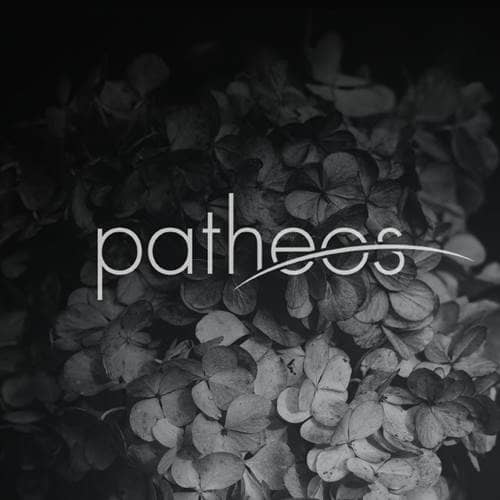- Trending:
- Pope Leo Xiv
- |
- Israel
- |
- Trump
- |
- Social Justice
- |
- Peace
- |
- Love

RELIGION LIBRARY
Zen
Sacred Texts
A saying often attributed to Bodhidharma, but actually from a much later period, is that Chan is a "special transmission outside the scriptures." Some take this to mean that language is irrelevant to Chan, while others argue that it is a reference to the Chan idea that enlightenment can only be transmitted directly from person to person.
While Chan is known for its cryptic dialogues and illogical stories, it has also produced many scholarly analyses of texts, and the Buddhist canon is as meaningful to Chan as it is to any other Buddhist sect. Chan also shares with other Buddhist schools the typical devotional practices involving scriptures, such as the chanting of texts in a ritual setting.
The Platform Sutra itself is central to the tradition, and the narrative within this sutra established the legend of one of Chan's founders, Huineng.
There are other sutras that have been particular favorites of Chan Buddhists. The Diamond Sutra, for example, is essential because Huineng had a flash of insight on hearing it recited, and this sent him on his quest to the north for Buddhist study. The Heart Sutra, popular with many schools of Buddhism, is often recited in Chan monasteries. The Diamond Sutra and the Heart Sutra are both texts within the larger Prajnaparamita, or Perfection of Wisdom, Sutras, the theme of which is that wisdom goes beyond words and is empty in the same way that all things are empty—that is, it lacks an independent, inherent nature.
The Garland Sutras and the Huayen sect of Buddhism associated with them influenced the formation of Chan with their notion of the unity and interpenetration of all things. This was expressed in the sutras by a number of analogies. One is that of Indra's net, a net of pearls said to hang over the palace of the Indian deity Indra. Each of these pearls is connected to the others and each reflects all the others, such that to take hold of one of these pearls is to take them all, to see one is to see all. Another analogy, probably taken from the Lankavatara Sutra, is to waves in the ocean. A wave is simply an action of the ocean; it has no permanent, separate existence. One wave merges into another, and is of the same essence. So it is with all of existence. Hence, "one is all and all is one."
As a lay follower of Buddhism, Vimalakirti was an example to many of the lay persons who were encouraged to practice Chan, and the Vimalakirti Sutra has been translated into Chinese more than any other sutra. One passage in the sutra extended the meaning of meditation beyond sitting quietly "in the forest under a tree" to include the cultivation of a meditative state of mind while going about daily life. This would become a Chan tradition. In another passage, an assembly of bodhisattvas asked Vimalakirti what it meant to enter the dharma of nonduality. His response was to remain silent. Many Chan poets have alluded to the "thunderous silence" of Vimalakirti.
Another sutra of importance to Chan was the Lankavatara Sutra, an account of a visit of the Buddha to Lanka, the island (now known as Sri Lanka) off the southern tip of the Indian subcontinent. According to Chan legend, Bodhidharma taught the Lankavatara Sutra to Huike, and early histories sometimes called Chan the Lankavatara school. Later, ideas from the sutra would be systematized by the Yogacara school.
The Lankavatara Sutra addressed these questions: If there is no self, how can an individual accumulate karma, and where is that karma stored? In response, it described eight levels of consciousness, the final level being a "storehouse consciousness" (alaya vijnana), which contains the karmic seeds of all past experience. When engaged, these karmic seeds provoke deep memories, and stimulate the process by which sentient beings are reborn. If one can break through at the root of consciousness, at this storehouse level, to grasp the emptiness of all categories and things, then the cycles of rebirth and dependent origination can be broken. This idea of a breakthrough realization of the true nature of mind was appealing to Chan thinkers. For them, however, the breakthrough was not to the realization of "pure mind" or some "other" state outside of normal existence.
The realization of the true nature of mind might result from the Chan practice of the "encounter dialogue," or gongan (Japanese, koan) study. Two men came to be known as famous practitioners of this technique: Shitou Xiqian (710-790) and Mazu Daoyi (709-788), and they would later be recognized as the founders of two schools of Chan, Linji (Rinzai in Japan) and Caodong (Japanese, Soto). The best known of all encounter teachers is Linji Yixuan (d. 867), whose phrase, "If you meet the Buddha, kill him!" is a familiar Chan saying. Some of the gongan include short questions, such as, "What is the sound of one hand clapping?" "What was your original face before you were born?" or "Does a dog have Buddha-nature?"
It should be noted that no texts of the time contain any record of Shitou or Mazu employing the encounter dialogue. The first record of its use is in the Anthology of the Patriarchal Hall, which appeared in 952. This anthology is also an early example of the Chan "transmission of the lamp" text; that is, it contains a list of all the patriarchs in a Chan lineage that began in India and continued to the time of the text. A number of these "transmission of the lamp" histories became part of the official Buddhist canon. They contained biographical information and records of the teaching of prominent monks, and also included many examples of encounter dialogues. Later, the dialogues were extracted and collected into separate anthologies, along with commentaries by others.
While serious gongan study is limited to the monastic setting, the publication of gongan anthologies has made them familiar to lay readers, and, for many, their characteristic enigmatic style has come to represent the uniqueness of Chan.
Study Questions:
1. Describe the relationship between enlightenment and Zen scriptures.
2. What sutras have influenced Zen, and how?
3. What does it mean to “encounter dialogue"?










